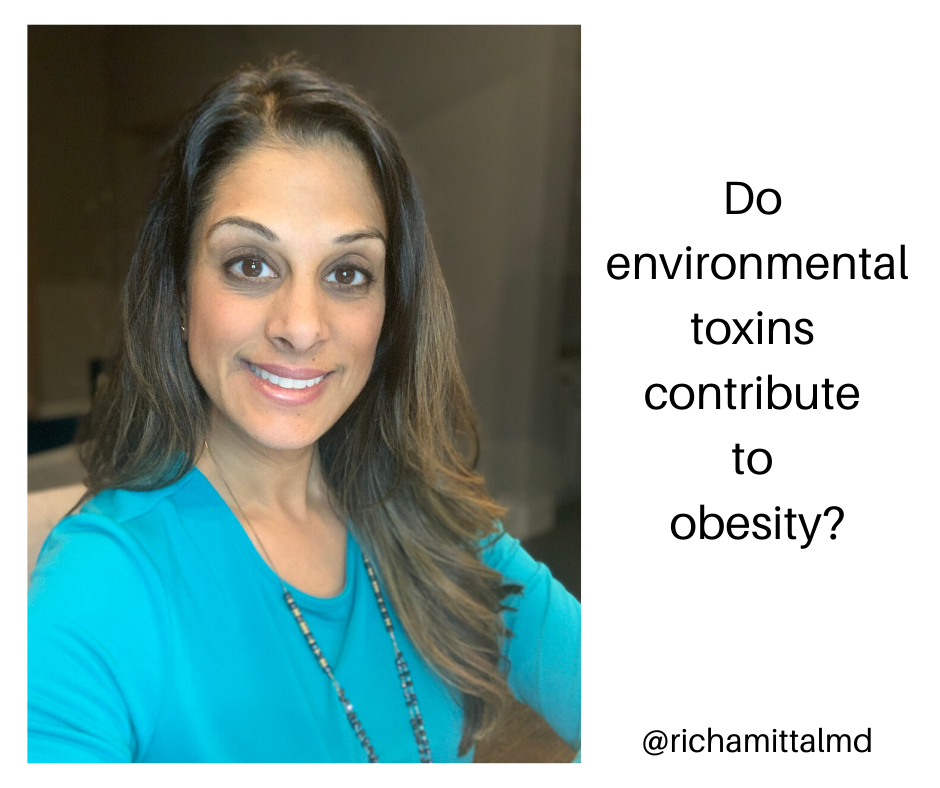
𝐖𝐡𝐚𝐭 𝐚𝐫𝐞 𝐎𝐛𝐞𝐬𝐨𝐠𝐞𝐧𝐬?
Did you know that certain chemicals in our personal care products and in the environment around us affect our hormones? They are called endocrine disruptors— some of these are linked to weight gain and obesity.
These chemicals contribute to weight gain by increasing the fat storage capacity of fat cells or by increasing the number of fat cells. Also, they may make it harder to maintain a healthy weight by changing hunger and fullness hormones, leading to more eating or by increasing the effects of high fat and high sugar diets.
If you and loved ones are looking to protect yourselves from such chemicals, and especially from the metabolic issues and resulting weight gain, read on.
𝐖𝐡𝐨 𝐢𝐬 𝐦𝐨𝐬𝐭 𝐬𝐮𝐬𝐜𝐞𝐩𝐭𝐢𝐛𝐥𝐞?
— Early fetal development- It is essential to be aware of this when planning pregnancy or during the time when a baby is developing.
— First years of life- As a family, it is important to be mindful of the products used in the home, not only for personal care, but also things like cleaning products and substances that may be present on furniture and children's toys.
𝐖𝐡𝐢𝐜𝐡 𝐜𝐡𝐞𝐦𝐢𝐜𝐚𝐥𝐬 𝐚𝐫𝐞 𝐜𝐮𝐥𝐩𝐫𝐢𝐭𝐬?
❌Air pollutants
❌Tributyltin, a chemical that is widely used as a fungicide and heat stabilizer in polyvinyl chloride (PVC) piping
❌Flame retardants: PDBEs disrupt thyroid function
❌BPA: Found in plastics, canned food liners
❌Phthalates: added to many consumer products to make them softer
❌Some pesticides, DDT
❌Polychlorinated biphenyls (PCBs), industrial chemicals that were used widely in the past in products such as paints, cements, fluorescent light ballasts, sealants, and adhesives.
𝐖𝐡𝐚𝐭 𝐜𝐚𝐧 𝐲𝐨𝐮 𝐝𝐨?
* Eat fresh fruit and vegetables and opt for organic if possible: If cost is prohibitive, often we can choose to atleast buy organic for produce on the "Dirty Dozen" list. According to the Environmental Working Group, here is a list from a Healthline article https://www.healthline.com/nutrition/dirty-dozen-foods#the-dirty-dozen .
The 2018 Dirty Dozen Food List
According to the EWG, the following conventional fruits and vegetables have the highest levels of pesticide residues (5):
- Strawberries: Conventional strawberries consistently top the Dirty Dozen list. In 2018, the EWG found that one-third of all strawberry samples contained ten or more pesticide residues.
- Spinach: 97% of spinach samples contained pesticide residues, including permethrin, a neurotoxic insecticide that is highly toxic to animals (6Trusted Source).
- Nectarines: The EWG detected residues in nearly 94% of nectarine samples, with one sample containing over 15 different pesticide residues.
- Apples: The EWG detected pesticide residues in 90% of apple samples. What’s more, 80% of the apples tested contained traces of diphenylamine, a pesticide banned in Europe (7).
- Grapes: Conventional grapes are a staple on the Dirty Dozen list, with over 96% testing positive for pesticide residues.
- Peaches: Over 99% of the peaches tested by the EWG contained an average of four pesticide residues.
- Cherries: The EWG detected an average of five pesticide residues on cherry samples, including a pesticide called iprodione, which is banned in Europe (8).
- Pears: Over 50% of pears tested by the EWG contained residues from five or more pesticides.
- Tomatoes: Four pesticide residues were found on the conventionally grown tomato. One sample contained over 15 different pesticide residues.
- Celery: Pesticide residues were found on over 95% of celery samples. As many as 13 different types of pesticides were detected.
- Potatoes: Potato samples contained more pesticide residues by weight than any other crop tested. Chlorpropham, an herbicide, made up the bulk of the detected pesticides.
- Sweet bell peppers: Sweet bell peppers contain fewer pesticide residues compared to other fruits and vegetables. Yet, the EWG cautions that pesticides used on sweet bell peppers “tend to be more toxic to human health.”
* Reduce use of plastics: Try to use glass and stainless steel containers to store food and to eat off of. Children included! There are great options now for stainless steel lunch boxes and dinnerware geared towards kids.
* Do not use plastics in the microwave: Again, use glass when re-heating food or do so on the stove top.
* Purchase furniture that has not been treated with flame retardants
* Choose fragrance-free products
* Check your personal care products! Try to use ones with the simplest chemicals and the least amount of added fragrance. This includes some essential oils like tea tree oil and lavendar.
For more resources on how to check your personal care products, use this website by the Environmental Working Group: https://www.ewg.org/skindeep/
Sources:
National Institute of Environmental Health Sciences
Environmental Working Group
